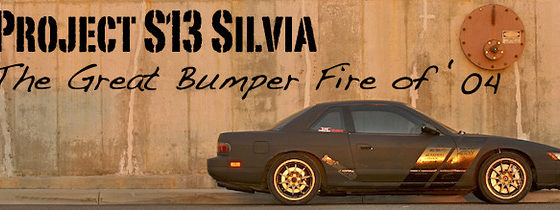,
 |
| A digital multi meter is indispensable for troubleshooting wiring and installing electrical components |
It is a fact that the SR20’s water pump cavitates and the coolant flow drops to zero at over 6500 rpm so Chuck used a set of Unorthodox underdrive pulleys to slow the water pump down to keep it out of the cavitation zone at high speeds. These modifications would hopefully keep things cool out on the hot salt pan.
The wire harness had been hacked into by Chuck as a teenager many years ago and also suffered the age induced embrittling of 19 years of constant use. Because of this, the car had developed a multitude of intermittent electrical problems; some of the more serious ones included no start situations. An older and smarter Chuck set about trouble shooting and repairing the wire harness and its connectors, a daunting task that took much time.
To bring the car up to the safety requirements of the 150 mph club, a roll bar built to USFRA specs had to be installed. Master racecar fabricator Richie Watanabe of Technosquare built a 4 point roll bar with the level of detail he normally reserves for road race and rally cars. The roll bar is constructed of 0.125” wall thickness 1.75” DOM 1020 steel tubing. Richie built the floor plates to wrap around the frame rails to maximize the strength and support of the main hoop. The rear leg support plates wrapped around the rear shock towers for the same reason. The main hoop is tight up against the head liner of the car for maximum protection
 |  |
| Technosquare Inc made the roll bar, here Ritchie Watanabe preps the unibody, grinding off the paint and sealer before welding in a super strong wrap around floor plate. | Howard and Richie Watanabe fit up the main hoop. The main hoop fits right up against the roof |
 |  |
| The main hoop in place, no bolt in roll bar fits like that | The floor plate it tapped into place before welding |
 |  |
| After welding you can see that the floor plate wraps around not only the floor but up onto the frame rails, super strong compared to the simple floor plates that most people do | The main hoop tacked to the floor plate before welding |
 |  |
| The roll bar with the diagonal brace, harness bar and rear supports before painting. This is as strong and safe as a roll bar can get. | Sturdy seat mounts for the Sparco FIA approved racing seats were welded in place |
A diagonal brace contributes to the strength of the main hoop and a lateral harness brace built into the main hoop allows for a proper and safe installation of a Diest six point safety harness. Richie installed an FIA approved Sparco Corsa seat using side mounts and Sparco’s FIA approved double locking sliders, sinking the mounts into the floor to lower the seat in relationship with the roof of the car for extra safety.
To prepare the suspension for high speed work, the alignment was changed from a road racing set up to something more suited for straight line running with close to zero degrees of negative camber and zero toe in the front and in the rear, slight toe in with very little negative camber. Darren Nishimura of Westend Alignment handled this operation. High Speed rated BFG Comp TA KD tires 205/45-17 tires were mounted on 17×7.5” Volk TE37 wheels.
Since there was no time to completely verify the engine’s state of tune on a load type chassis dyno, an Innovate Motorsports LMA-3 aux box data logging system and LM-1 wideband O2 sensor were mounted to monitor the air fuel ratio, RPM, boost pressure, intake air temperature and G forces. Any lean conditions would be adjusted in the field via fuel pressure adjustments. VP C16 fuel was to be used as an additional margin of safety during the high speed runs.
 |  |
| The Innovate LM-1 wide band air fuel ratio meter and datalogger was essential for determining that all was well during the extended full throttle runs. | An old school HKS EVC-1 was installed to control boost. Too bad they don’t make good simple boost controllers like this anymore. |
Since the 80’s era stock speedometer only had display numbers going up to 90 mph and there are severe penalties involved with going too fast on licensing runs, a Garmin Street Pilot GPS system was installed as the primary speed indicator.
As always in racing, despite working until the AM hours on work days, delays kept the car from being completed right up till the night before Chuck and his girlfriend Annie Sam were scheduled to leave. Not all of the preparation on the car was complete. One of the major concerns was if the 80’s box like body of the B12 Sentra would remain stable at high speeds. Weird things happed to cars at speed on the salt, biting experienced people like the folks at Racing Beat and GM Motorsports whose entries had suffered from the dangerous blow over phenomena, where air pressure suddenly flips the car on its back.




1 comment
Hi.am reading and encouraged by Chuck Jones adventure in his Sentra racer car and am from Kenya.I personally own a b12 Sentra.I kindly request a documentary from Chuck via my email address on all the processes he undertook till the final product.